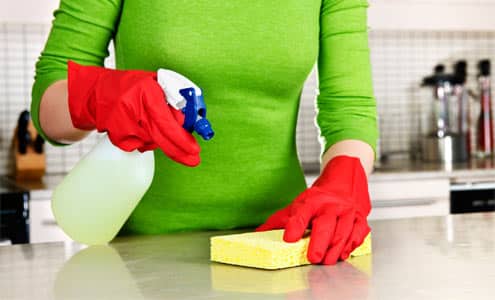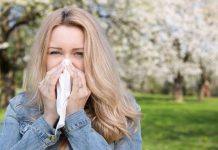
by Fred Fletcher, Wellness Contributor
You may be surprised at some of the things given the “lime” light in this article. As a general rule, too many people ignore how important cleanliness is in relation to food safety. The worst that can happen, some people think, is an upset stomach, diarrhea or vomiting.
That, however, is one of many misconceptions which, in spite of food safety education programs, still “plague” us.
Foodborne illnesses often go beyond relatively mild ailments. In fact, the bugs we pick up from food-related surfaces can lead to serious and potentially lethal medical problems, including: botulism, cholera, Hepatitis A, Listeriosis, Salmonellosis, Shigellosis, Staphylococcus food poisoning, Norovirus infection, etc. Additionally, people infected with meningitis, tuberculosis, and other infectious diseases, can also share their pathogenicity through foodborne pathways (perhaps innocently, if not yet diagnosed with an ailment).
In fact (according to the CDC) about 3,000 people die from foodborne illnesses yearly–not taking into consideration long-term medical complications and the 5 to 6 billion dollars in lost productivity and medical costs.
Many of these dangers can easily be avoided with appropriate food preparation, cooking, and serving hygiene; nevertheless, for mysterious reasons, many people fail to wash their hands when handling/consuming food. They also routinely pick up and an assorted variety of nasty germs from these often-dirty surfaces:
1. Lemon wedges. Investigations have revealed that lemon wedges are often very dirty things to put in your food and drinks. Apparently, those who cut them (probably “waiting” staff who have obtained very little training in food preparation safety) do so with dirty hands–maybe after going to the bathroom or handling money. Consequently, these are often heavily laden with E-coli and other nasty substances/pathogens.
2. Dining tables. If you’ve never noticed, next time you dine out keep a close eye on bus boys/girls. They usually carry around some kind of container full of bacteria/virus-laden (with a little bit of detergent mixed in) dirty water which they use on every table they clean after guests leave. Consequently, some of the dirtiest surfaces on earth are probably these same tables upon which you may lay your eating utensils, bread, vitamins, pills, etc.
3. Kitchen countertops. Most people don’t clean their countertops often enough or with the right cleaning agents–sometimes because they don’t want to damage “delicate” surfaces. These surfaces, however, are often teeming with some very nasty microorganisms–especially if pets, pests (i.e., cockroaches, mice, etc.) and children are around.
4. Eating utensils at most restaurants. What you will find is that waiting staff and cashiers/hostesses are often asked to wrap or put out utensils before the doors are opened for business or while things are slow. This would be fine if these persons were required to wash their hands before handling these items but that is often not the case; they also may not know/realize that it’s wrong to touch the parts of utensils that go in the mouth. Be especially wary of any restaurant that puts these utensils directly on top (instead of inside or above clean napkins) of the dirty tables already mentioned.
5. Cutting boards. Many people cut up a salad on the very same board they used to cut up raw meat and other unclean items. A cutting board, for the record, has to be washed (not just rinsed) every time something different is cut up on it but how many people do you know who take the time to do that?
6. Pots, pans and cookie sheets improperly washed. There should be no grease or embedded food particles on the surfaces of recently washed pots, pans and cookie sheets. These surfaces, furthermore, need to be scrubbed with metallic scouring pads, not just sponges; also, putting these items in dishwashing machines is not acceptable. They can only be properly washed with good old fashioned elbow grease.
7. Improperly washed dishes, glassware & utensils. Some people, afraid of damaging their delicate “treasures,” will not use strong detergents or rely too much on washing machines. If you, however, see any kind of residue, grease or particles on surfaces supposedly just washed, you need to come up with a more efficacious cleaning routine/system.
8. Salads & uncooked vegetables. Although these things are “natural,” vegetables, fruits and nuts are often very dirty or laced with pesticides. Consequently, they need to be washed thoroughly; said washing is pointless, of course, if these things are then cut up with dirty hands, on dirty surfaces or using improperly washed cutting implements.
9. Buffet restaurant food in general. Even buffets with sneeze guards (which are often very poorly designed or only partially do what they are meant to do) cannot stop the imperceptible but ubiquitous amounts of germs, hair, dead skin, and the dust/debris brought from outside/work that people unleash on uncovered containers of food. How many people sneeze or cough on said food? And what about children (whose height is just right to make sneeze guards useless) and their penchant to touch everything or cough/sneeze? Food from other types of restaurants are also vulnerable but at least it’s usually exposed to less people-created contamination.
10. Uncooked or poorly cooked meats. It’s difficult to say how many nasty germs are thriving on most uncooked meats; actually, the instant an animal dies or is killed, massive amounts of microorganisms (many of them, like Salmonella and Campylobacter, pathogenic) congregate. It is rarely (if ever) a good idea to eat uncooked or poorly cooked meats, regardless of what cultural traditions you advocate.
Conclusion
Whenever possible, avoid food-related surfaces which may ultimately put your health at risk. While you may only suffer mild food poisoning, other more sinister possibilities may lurk in your future, if you violate some easy-to-follow food safety guidelines. At the top of that list is avoiding surfaces that are probably very dirty–dirty enough, in fact, to make you seriously ill.
Thank you to our friends at Wellness.com for contributing this piece!
Copyright 20201, HealthyResearch.com
















